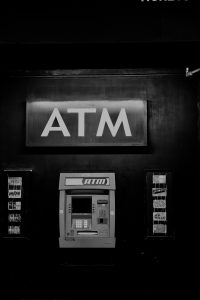The forex market, also known as the foreign exchange market, is the largest and most liquid financial market in the world. It is a decentralized market where currencies are traded 24 hours a day, five days a week, across different time zones. The forex market is driven by various factors such as economic indicators, geopolitical events, central bank policies, and market sentiment.
Economic Indicators
Economic indicators are the statistical data that provide information about the economic performance of a country. These indicators include gross domestic product (GDP), inflation rate, unemployment rate, industrial production, consumer spending, and trade balance. The forex market reacts to the release of these indicators as they provide insights into the health of an economy. For instance, if the GDP of a country increases, it indicates that the economy is growing, which can lead to an increase in the value of the currency. Similarly, if the unemployment rate rises, it indicates that the economy is deteriorating, which can lead to a decrease in the value of the currency.
Geopolitical Events
Geopolitical events such as wars, natural disasters, elections, and diplomatic tensions can have a significant impact on the forex market. These events can cause uncertainty and instability in the markets, leading to a flight to safety. For example, if there is a war in a region, investors may move their money to safe-haven currencies such as the US dollar, the Swiss franc, or the Japanese yen. Similarly, if there is an election in a country, investors may move their money based on the outcome of the election, depending on which party they think will have a favorable economic policy.
Central Bank Policies
Central banks are responsible for setting monetary policy in a country. They control the money supply, interest rates, and inflation. The forex market reacts to the policies of central banks, as they can have a significant impact on the value of the currency. For instance, if a central bank raises interest rates, it can lead to an increase in the value of the currency, as it makes it more attractive to foreign investors. On the other hand, if a central bank lowers interest rates, it can lead to a decrease in the value of the currency, as it makes it less attractive to foreign investors.
Market Sentiment
Market sentiment refers to the overall attitude of investors towards a particular currency. It is driven by factors such as news headlines, rumors, and speculation. The forex market reacts to the sentiment of investors, as it can have a significant impact on the demand for a currency. For example, if there is positive news about a country’s economy, investors may become more bullish on the currency, leading to an increase in demand. Similarly, if there is negative news about a country’s economy, investors may become more bearish on the currency, leading to a decrease in demand.
Conclusion
The forex market is a complex and dynamic market that is driven by various factors. Economic indicators, geopolitical events, central bank policies, and market sentiment are some of the key drivers of the forex market. Understanding these drivers can help traders make better-informed decisions when trading currencies. However, it is important to note that the forex market is unpredictable, and traders should always exercise caution and use risk management strategies to minimize losses.






